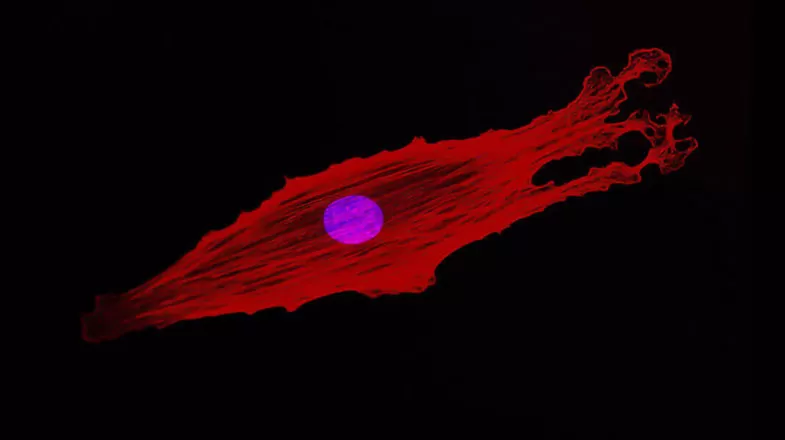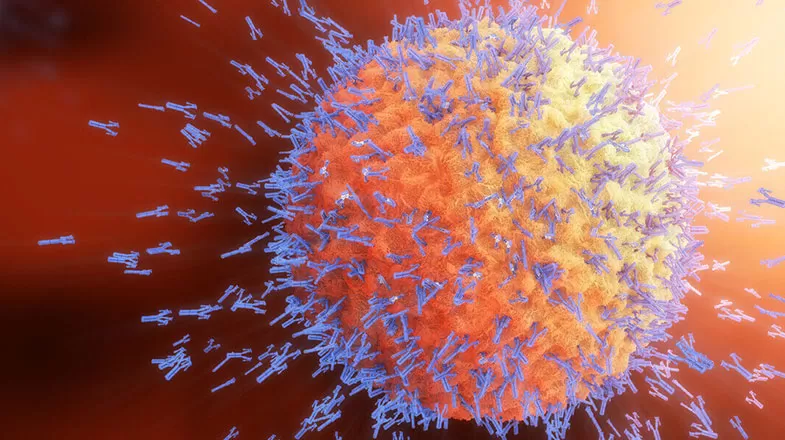Articles
Featured Articles
Read our latest stories on the people and scientific innovations making a difference in patients’ lives.

Science & Innovation
Behind the Breakthroughs: The Scientists Behind Pfizer’s Cancer Research
Have you ever wondered what makes a cancer researcher tick, or how the pursuit of life-changing treatments became their life’s work? How about what keeps them up at night, and what goes through their mind when an experiment fails? And what about the things that inspire and motivate them every day in the lab? Click on the videos below to find out, and to get to know the talented scientists at Pfizer who are working to deliver the next wave of cancer breakthroughs. Meet Our Scientists

Science & Innovation
Attacking Cancer Cells That Develop Resistance
By Get Science Staff - This article originally published on Get Science When cancer patients receive therapy for an extended time, they often face the specter of drug resistance as tumor cells mutate and find ways to evade the cancer-killing medicines. Exploring new ways to disarm rogue cells that have developed resistance is a major field of modern cancer research. One way to address the issue of resistance is to attack cancer through the fundamental processes that drive their core mission —...

Science & Innovation
Through Data, Digital Medicine Paints a More Complete Patient Picture
Wearable devices have become a common way for people to count their steps, monitor their heart rate, track their sleep and collect other health data. These kinds of devices are becoming increasingly important in the realm of “digital medicine” as well. At the Pfizer Innovation Research, or PfIRe Lab, wearable devices are adding a new dimension to clinical trials, helping scientists monitor symptoms, assess health and better understand how treatments work. Digital medicine may be able to...

Science & Innovation
Unlocking the Secrets of the Immune System
The immune system consists of dozens of different cell types that are designed to protect and defend against infection. But sometimes, immune cells can respond in a way that can actually cause disease—for example, when certain cell types either over- or underact. In the field of immunology, scientists are studying how to disrupt or manage these different immune responses to improve health. In cancer, for example, the immune system is turned off or muted, while in inflammatory disorders, the...

Science & Innovation
The Process of Naming Pharmaceutical Drugs
Micronase. Daypro. Tessalon. Each of those names began on a list of hundreds of options, and the process to approve that name may have begun years prior to even the drug’s approval.The first part of this two-part series on how drugs are named explored the process for coming up with the generic name for a medication. This article explores how drugs get their brand name.Coming up with a safe brand nameUnlike generic names, brand names aren’t tied to particular suffixes, and that allows for more...

Science & Innovation
Ever Wonder How Drugs Are Named? Read On
IBRANCE. Xeljanz. Sildenafil. Viagra.Most Americans have heard of at least one of those drug names. But where do those monikers come from? Is it scientific? Metaphorical? Both?The drug-naming process is one that’s long and involved, whether a company is devising a generic name or a brand name (there are different processes for each). In fact, according to Michael Quinlan, who is senior manager, trademark development, within the Customer Analytics & Insights group with Pfizer, naming a drug can...

Science & Innovation
A Picture of Pain: What Life is Really Like with Chronic Pain
Almost everyone has experienced some type of acute, or temporary, pain in their lives. Acute pain is a protective response to tissue injury that typically resolves with the healing process and lasts less than three months. However, for one in five people around the world, their pain persists for longer than three months and is considered chronic. ,Some people may suffer from diseases or disorders that cause their chronic pain, while others may have an injury or accident that causes long-term or...

Science & Innovation
Collection and Use of Real-World Data Continues to Grow Around the World
Conducting real-world data (RWD) analyses to generate real-world evidence (RWE) is a growing practice in the healthcare community. RWE provides helpful information that complements clinical trial findings and may help fill knowledge gaps related to how a medication is used in real-world medical settings. These data consist of de-identified patient-related data collected from various sources, including but not limited to, anonymized electronic medical records, claims databases, health surveys...

Science & Innovation
Turning the Promise of Gene Therapy into a Reality
Pfizer's Rare Disease team is focusing on highly specialized, potential gene therapy treatments, and clinical trials are underway to explore the potential of gene therapy. By targeting the underlying cause of a genetic disease, Pfizer hopes to restore normal function in affected tissues or cells, which could potentially enable a patient to manage his or her disease without the need for ongoing treatments. If Pfizer is successful, imagine the possibilities. How do you translate disease...

Science & Innovation
Imagine the Possibilities: Gene Therapy
Genes play an essential role in determining the function of each cell in the body, making up 30 million codes of DNA. If even one of these codes is damaged, a genetic alteration may occur causing a genetic disease. Gene therapy has the potential to significantly improve the lives of people who have genetic diseases caused by genetic alterations, some of which can be debilitating and life-threatening. Pfizer Rare Disease is focusing on highly specialized, potentially one-time gene therapy...

Science & Innovation
One Family’s Hemophilia Journey
This microdocumentary shares the moving story of a family with two young sons who have severe hemophilia, giving us a glimpse into their history and treatment routine. Hemophilia is a rare bleeding disorder in which the body is unable to properly create a blood clot. Beyond external bleeding, like a cut, people with hemophilia also bleed internally and in their joints, which can lead to crippling arthritis later in life. The story highlights the significant progress made in this therapeutic...

Science & Innovation
4 Breakthroughs in Breast Cancer Treatment
One out of eight women will develop invasive breast cancer in her lifetime. (Science Photo Library)Advances in genetic testing, immunotherapy, and other areas are transforming the way we treat breast cancer.Survival rates for breast cancer have improved in recent decades. That’s good news for the approximately 250,000 women expected to be diagnosed in the U.S. in 2016. In recent years, scientists have been harnessing genetics, immunotherapy, and other innovative treatments to more precisely...
Media Resources & Contact Information
Anyone may view our press releases, press statements, and press kits. However, to ensure that customers, investors, and others receive the appropriate attention, Pfizer Media Contacts may only respond to calls and emails from professional journalists.
